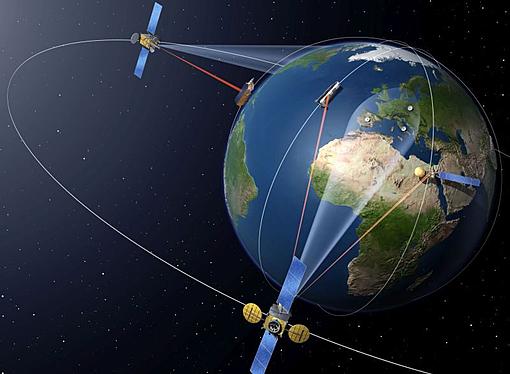NASA has expressed great concern about the planned broadband satellite constellation, saying commercial spacecraft will increase the risk of collisions in Earth's critical orbit.On Oct. 30, NASA sent a formal comment letter to the US Federal Communications Commission (FCC) regarding a request from Texas-based AST & Science to operate a network of 243 satellites, which It is about 450 miles (720 kilometers) from the Earth's surface, as Ars Technica's Eric Berger reported earlier this week.
This constellation, called SpaceMobile, will provide broadband to mobile phones directly.If all goes according to the company's plans to pull this out, the SpaceMobile satellite will have a very large antenna covering approximately 9,700 square feet (900 square feet). Square meters), Berger wrote.As such, the SpaceMobile satellites will have a relatively large cross section, increasing the probability of conjunctions or flies that are close to other spacecraft on their necks in the orbital forest, identifying NASA letters, which you can find here.
And the space agency's orbit is home to "A-Train," a group of 10 Earth observation missions run by NASA, the US Geological Survey and a number of international partners at the National Geological Survey. The A-Train's average altitude is 438 miles (705 km), but the satellites get as close as 429 miles (690 km) and 460 miles (740 km) as far as.Therefore, the AST constellation will be co-ordinated primarily with A-Train if proposed orbit altitude is selected," read a comment letter signed by Samantha Fonder, NASA representative for the Commercial Space Transportation Interagency Group.
NASA calculations สล็อต suggest that gliding safely amid SpaceMobile satellites may require 1,500 "mitigation operations" or maneuvers and 15,000 "planning activities" annually for A's handlers. -Train Fonder writes that equates to four maneuvers and 40 planned activities every day.In addition, "this is an orbital system with a large debris object. (This is the result of the Fengyun 1-C ASAT test and the Iridium 33-COSMOS 2251 collision), so frequent connections to debris were found, ”the letter added, referring to the" Iridium 33-COSMOS 2251 "collision. Respectively, in China's anti-satellite tests in 2007 and the collision between one operating satellite and the dead satellite in 2009.
NASA therefore wants AST & Science "to consider an alternative orbital system for this constellation, which may be below the A-Train constellation, to make flight safety scenarios more manageable for such large satellites." "The letter read As for AST & Science, SpaceMobile will not pose a risk of improper collisions, the company's calculations indicate that each of the network's satellites has only a 1 in 5,000 chance of colliding with another spacecraft randomly. No mitigation has been undertaken over its lifetime, Berger reported in another Ars Technica issue this week. If AST & Science received 243 higher satellites, the probability of a random smash-up constellation would be Is about 1 in 20
Abel Avellan, founder of AST & Science, also stressed that the company knows what it is doing, even though it has yet to launch a satellite into orbit (the company is building a mini-prototype of the SpaceMobile spacecraft and plans to launch it in the second half. Of 2021, Avellan told Berger.)We're not the cowboys launching satellites," Avellan told Berger. "This is a serious and well funded project.AST & Science recently earned about $ 128 million in its latest "Series B" investment round, Avellan told Berger and its partners Samsung, Rakuten and Vodafone Group.
You can learn more about SpaceMobile and NASA's objections to AST & Science's constellation plan in two of Berger, which you can find here and here.SpaceMobile isn't the only large broadband constellation to travel, of course.Amazon aims to send around 3,200 broadband satellites into Earth's low orbit, and OneWeb has raised 74 internet satellites for the planned constellations that have the craft. At least 648 planets (although the company just went bankrupt But it might complicate those ambitions.)
SpaceX has launched nearly 900 satellites for the Starlink megaconstellation. And it has launched a public beta testing campaign for broadband services. And many more Starlink launches: Elon Musk's company has received FCC permission to use 12,000 Starlink satellites in Earth orbit.The StarLink spacecraft is much lower than the A train, zooming through space about 340 miles (550 km) above the planet's surface.




 LinkBack URL
LinkBack URL About LinkBacks
About LinkBacks


 Reply With Quote
Reply With Quote